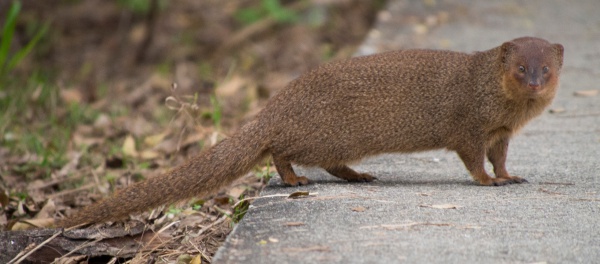Facts About Javan mongoose
The Javan mongoose, also known as the small Indian mongoose, hails from South and Southeast Asia but has spread to various parts of the globe. Scientists recognize several subspecies of this mongoose, and genetic research has shown distinct differences between those from Southeast Asia and those from the West. These animals have a slender build, with elongated heads and pointed snouts. Interestingly, males tend to be larger than females.
Originally introduced to places like Hawaii, the Caribbean, and Okinawa to control pests such as rats and snakes, the Javan mongoose has become a significant problem. Instead of merely tackling pests, they have wreaked havoc on native bird and reptile populations.
Typically, these mongooses are solitary creatures, though they do occasionally form social groups. Female mongooses usually give birth to 2-5 young per litter. As opportunistic feeders, they consume a variety of foods, including insects, small mammals, birds, and eggs.
However, there are significant downsides. The Javan mongoose can carry diseases such as leptospirosis and rabies, posing public health risks in some areas. Genetic studies have shown that these introduced populations have diversified due to genetic drift and isolation.
Due to their negative impact on local ecosystems, particularly their predation on native species, the Javan mongoose is considered invasive. In fact, they have been known to cause extinctions in some areas. Recognizing this, the European Commission listed the mongoose as an invasive alien species in the EU in 2016.
